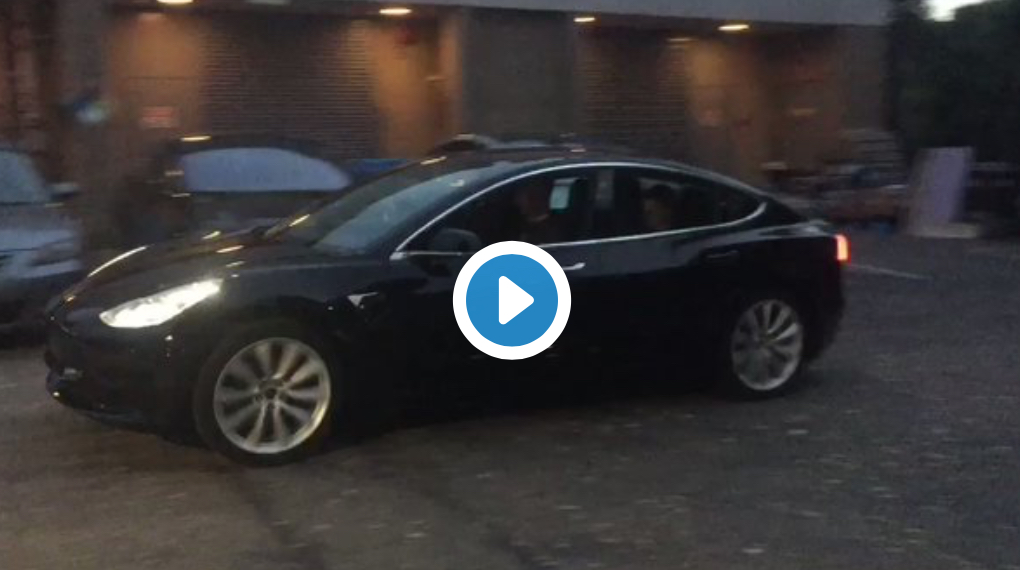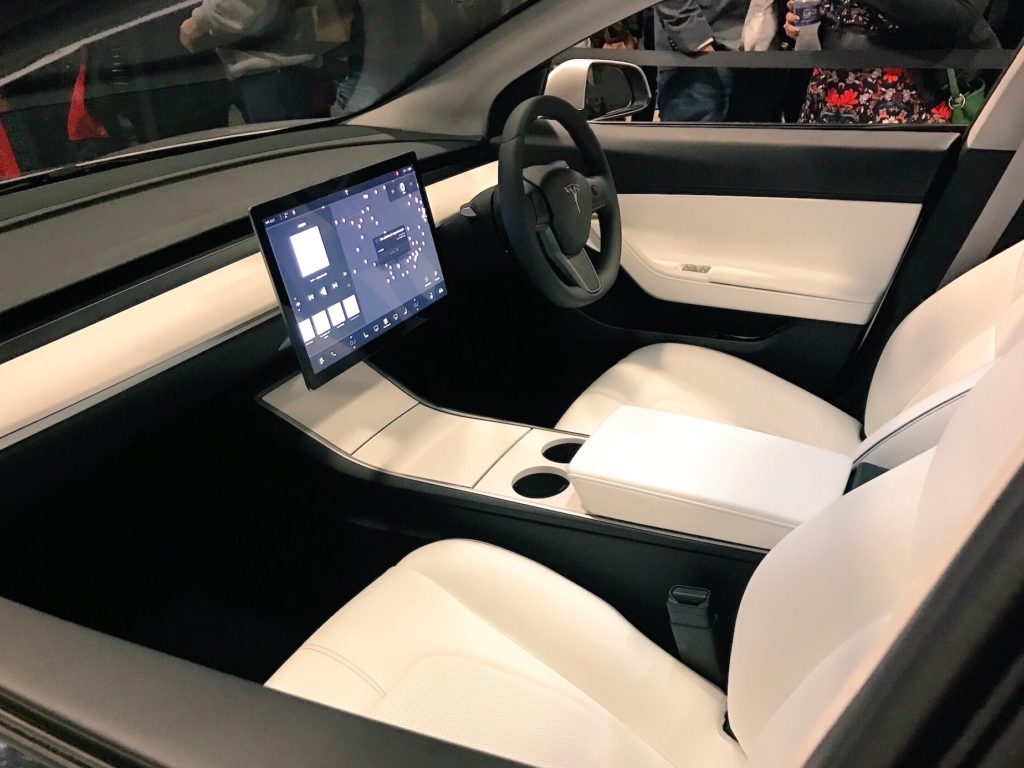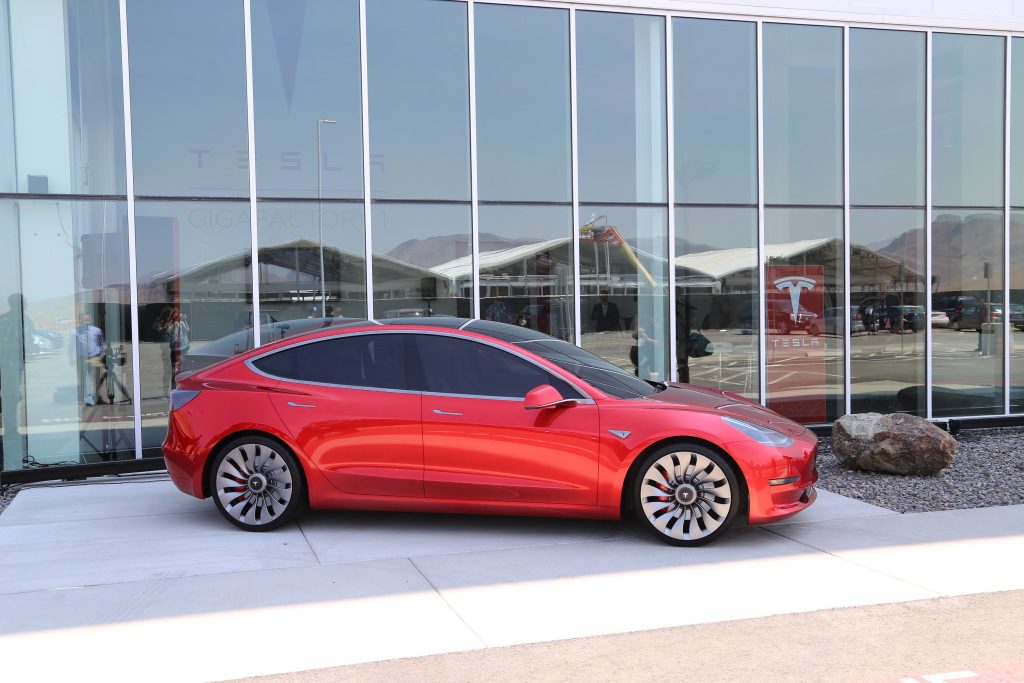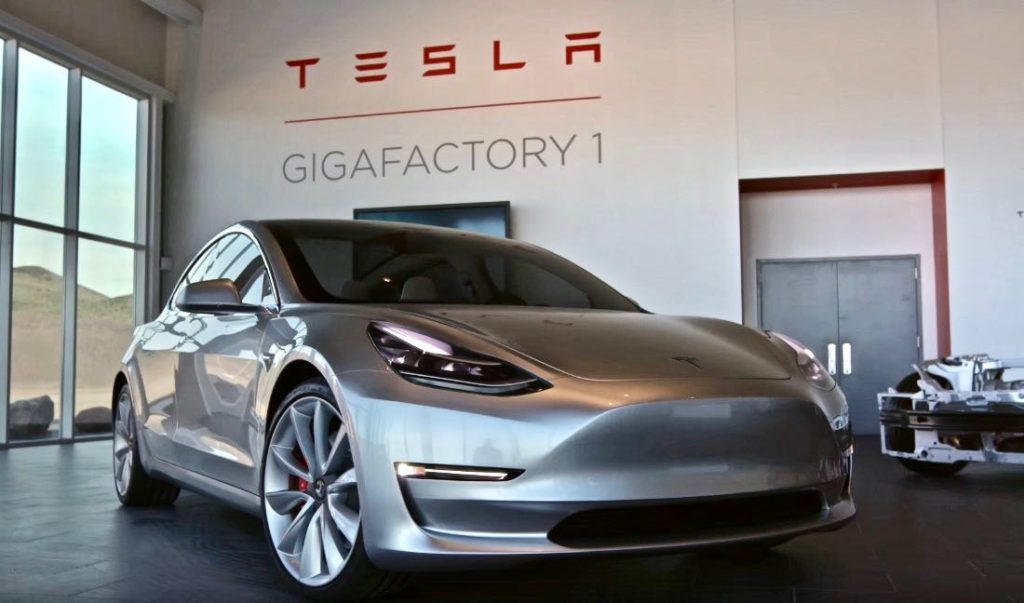News
Tesla Model 3 Mania: 1 year and 400k reservations later
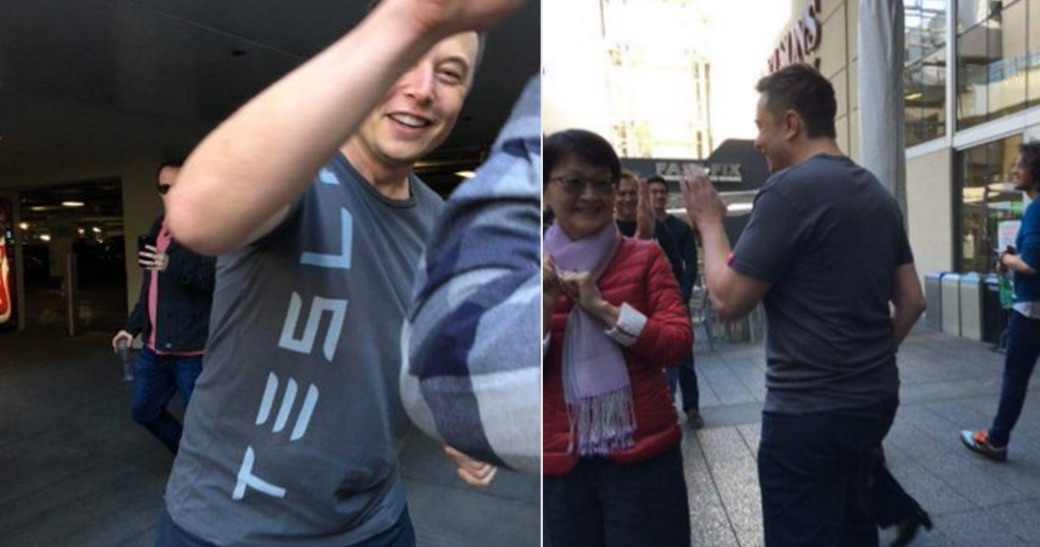
March 31, 2016, the day otherwise known as Model 3 Mania drew thousands of eager Tesla enthusiasts worldwide who lined up during predawn hours at their local Tesla showroom, in hopes to become one of the very first to reserve Tesla’s highly anticipated mass market sedan. Many went as far as to camp out overnight in front of the storefront to get an early jump on placing their $1,000 reservation deposit when stores opened the following day.
The day of Model 3 Mania also saw Elon Musk making a surprise visit to the Century City Tesla Store and giving high fives to the hundreds of eager Model 3 reservation holders that were waiting in line. What followed that evening was Tesla’s official Model 3 reveal event. Invited guests were given the opportunity to test ride in the Model 3, but also witness arguably the most significant product launch in automotive history.
High-five from Elon Musk himself at Century City for the #Model3. Now THAT's a CEO!! pic.twitter.com/cwE38kmxp8
— TESLARATI (@Teslarati) March 31, 2016
Now, one year later and with a presumed reservation count well north of 400,000 vehicles, Model 3 is set to take stage again at Tesla’s final ‘Part 3’ launch event.
We’ve outlined some of the milestones Tesla has been able to achieve for Model 3 in the short year following the vehicle’s debut.
Release Candidate video – The most recent Model 3 teaser came in the form of a video that Elon shared via Twitter. No new details were revealed other than the fact that this was the closest near production-ready Model 3 we have seen thus far. In true Tesla form, the release candidate looks similar to the vehicle the company showcased on March 31st of last year. There doesn’t seem to be any major updates on the aesthetics of the car other than a slightly revised nose.
Right Hand Drive Model 3 – Elon confirmed over Twitter that right-hand drive Model 3 won’t be arriving until the summer 2018.
Dual motor all-wheel drive option arriving later – Initial production run will be for the rear-wheel drive Model 3 with all-wheel drive models following 6 to 9 months after. It was communicated that this is to keep production as simple as possible from the outset.
Battery Size estimates – Model 3 battery will max out at 75kWh and have likely a 300+ mile range based on the current physical limitations of the chassis size.
Capital raise in preparation for Model 3 – Tesla kicked off another capital raise to rake in an additional $1.3 billion ahead of the start of Model 3 production. This was in addition to a $2 billion stock sale several months back.
Warehouse Expansion – Tesla signed a lease for 1.3 million square feet of warehouse space northeast of the Fremont factory. We expect that this warehouse will be used to store battery pack inventory moving from Gigafactory 1 in Spark, Nevada to the Fremont factory.
Gigafactory starts Model 3 battery cell production – Gigafactory 1 will begin production of Model 3’s high performance ‘2170 cell’ in Q2. Tesla is currently mass producing 2170 lithium ion cells for the company’s commercial and home battery storage systems.
Heads Up Display – Model 3’s gauge-less cluster has led many to believe that Tesla had plans for a HUD. However, that was quickly put to rest after Elon confirmed over Twitter that Model 3 will not have heads up display.
Supercharging congestion a concern in advance of Model 3 – Model 3 will add a significant number of Tesla vehicles to roads around the world, leaving many to wonder about the type of impact this will have on the Supercharger network. Mainly, how long do I need to wait before I can charge?
Tesla addressed these fears by implementing a new annual cap on Supercharging for all owners that purchased a Model S or Model X this year.
Model 3 Ludicrous Mode – For the performance junky out there, Ludicrous mode will indeed be available for Model 3, though Elon did note that it’s not going to be as fast as Model S.
All eyes are on the start of production for Model 3 that’s scheduled to take place in July. Employees will have the ultimate first shot at taking delivery of a new Model 3.
Happy 1 yr old birthday Model 3 Mania.

News
Tesla FSD fleet is nearing 7 billion total miles, including 2.5 billion city miles
As can be seen on Tesla’s official FSD webpage, vehicles equipped with the system have now navigated over 6.99 billion miles.

Tesla’s Full Self-Driving (Supervised) fleet is closing in on almost 7 billion total miles driven, as per data posted by the company on its official FSD webpage.
These figures hint at the massive scale of data fueling Tesla’s rapid FSD improvements, which have been quite notable as of late.
FSD mileage milestones
As can be seen on Tesla’s official FSD webpage, vehicles equipped with the system have now navigated over 6.99 billion miles. Tesla owner and avid FSD tester Whole Mars Catalog also shared a screenshot indicating that from the nearly 7 billion miles traveled by the FSD fleet, more than 2.5 billion miles were driven inside cities.
City miles are particularly valuable for complex urban scenarios like unprotected turns, pedestrian interactions, and traffic lights. This is also the difference-maker for FSD, as only complex solutions, such as Waymo’s self-driving taxis, operate similarly on inner-city streets. And even then, incidents such as the San Francisco blackouts have proven challenging for sensor-rich vehicles like Waymos.
Tesla’s data edge
Tesla has a number of advantages in the autonomous vehicle sector, one of which is the size of its fleet and the number of vehicles training FSD on real-world roads. Tesla’s nearly 7 billion FSD miles then allow the company to roll out updates that make its vehicles behave like they are being driven by experienced drivers, even if they are operating on their own.
So notable are Tesla’s improvements to FSD that NVIDIA Director of Robotics Jim Fan, after experiencing FSD v14, noted that the system is the first AI that passes what he described as a “Physical Turing Test.”
“Despite knowing exactly how robot learning works, I still find it magical watching the steering wheel turn by itself. First it feels surreal, next it becomes routine. Then, like the smartphone, taking it away actively hurts. This is how humanity gets rewired and glued to god-like technologies,” Fan wrote in a post on X.
News
Tesla starts showing how FSD will change lives in Europe
Local officials tested the system on narrow country roads and were impressed by FSD’s smooth, human-like driving, with some calling the service a game-changer for everyday life in areas that are far from urban centers.

Tesla has launched Europe’s first public shuttle service using Full Self-Driving (Supervised) in the rural Eifelkreis Bitburg-Prüm region of Germany, demonstrating how the technology can restore independence and mobility for people who struggle with limited transport options.
Local officials tested the system on narrow country roads and were impressed by FSD’s smooth, human-like driving, with some calling the service a game-changer for everyday life in areas that are far from urban centers.
Officials see real impact on rural residents
Arzfeld Mayor Johannes Kuhl and District Administrator Andreas Kruppert personally tested the Tesla shuttle service. This allowed them to see just how well FSD navigated winding lanes and rural roads confidently. Kruppert said, “Autonomous driving sounds like science fiction to many, but we simply see here that it works totally well in rural regions too.” Kuhl, for his part, also noted that FSD “feels like a very experienced driver.”
The pilot complements the area’s “Citizen Bus” program, which provides on-demand rides for elderly residents who can no longer drive themselves. Tesla Europe shared a video of a demonstration of the service, highlighting how FSD gives people their freedom back, even in places where public transport is not as prevalent.
What the Ministry for Economic Affairs and Transport says
Rhineland-Palatinate’s Minister Daniela Schmitt supported the project, praising the collaboration that made this “first of its kind in Europe” possible. As per the ministry, the rural rollout for the service shows FSD’s potential beyond major cities, and it delivers tangible benefits like grocery runs, doctor visits, and social connections for isolated residents.
“Reliable and flexible mobility is especially vital in rural areas. With the launch of a shuttle service using self-driving vehicles (FSD supervised) by Tesla in the Eifelkreis Bitburg-Prüm, an innovative pilot project is now getting underway that complements local community bus services. It is the first project of its kind in Europe.
“The result is a real gain for rural mobility: greater accessibility, more flexibility and tangible benefits for everyday life. A strong signal for innovation, cooperation and future-oriented mobility beyond urban centers,” the ministry wrote in a LinkedIn post.
News
Tesla China quietly posts Robotaxi-related job listing
Tesla China is currently seeking a Low Voltage Electrical Engineer to work on circuit board design for the company’s autonomous vehicles.

Tesla has posted a new job listing in Shanghai explicitly tied to its Robotaxi program, fueling speculation that the company is preparing to launch its dedicated autonomous ride-hailing service in China.
As noted in the listing, Tesla China is currently seeking a Low Voltage Electrical Engineer to work on circuit board design for the company’s autonomous vehicles.
Robotaxi-specific role
The listing, which was shared on social media platform X by industry watcher @tslaming, suggested that Tesla China is looking to fill the role urgently. The job listing itself specifically mentions that the person hired for the role will be working on the Low Voltage Hardware team, which would design the circuit boards that would serve as the nervous system of the Robotaxi.
Key tasks for the role, as indicated in the job listing, include collaboration with PCB layout, firmware, mechanical, program management, and validation teams, among other responsibilities. The role is based in Shanghai.
China Robotaxi launch
China represents a massive potential market for robotaxis, with its dense urban centers and supportive policies in select cities. Tesla has limited permission to roll out FSD in the country, though despite this, its vehicles have been hailed as among the best in the market when it comes to autonomous features. So far, at least, it appears that China supports Tesla’s FSD and Robotaxi rollout.
This was hinted at in November, when Tesla brought the Cybercab to the 8th China International Import Expo (CIIE) in Shanghai, marking the first time that the autonomous two-seater was brought to the Asia-Pacific region. The vehicle, despite not having a release date in China, received a significant amount of interest among the event’s attendees.
